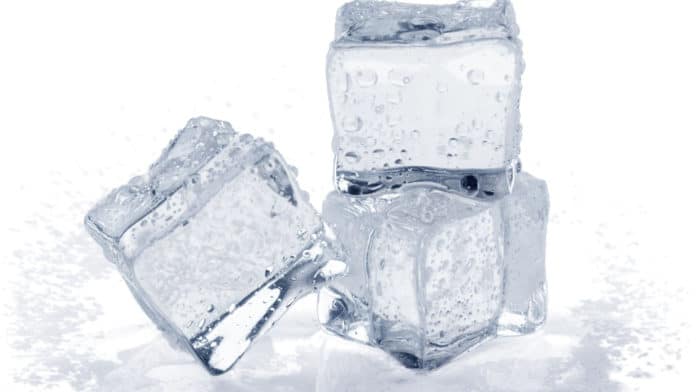Temperature changes can cause water to change its state. When the temperature drops to 0°C, water is converted into ice and vice versa. Molecular simulations have provided insight into the microscopic mechanisms underlying homogeneous ice nucleation. However, these simulations have so far proven prohibitively expensive.
A team from Princeton University has successfully used artificial intelligence (AI) to solve equations that control the quantum behavior of individual atoms and molecules to replicate the early stages of ice formation. The simulation shows how water molecules transition into solid ice with quantum accuracy.
Roberto Car, Princeton’s Ralph W. *31 Dornte Professor in Chemistry, who co-pioneered the approach of simulating molecular behaviors based on the underlying quantum laws more than 35 years ago, said, “In a sense, this is like a dream come true. Our hope then was that eventually, we would be able to study systems like this one. Still, it was impossible without further conceptual development, and that development came via a completely different field, that of artificial intelligence and data science.”
Modeling the early stages of freezing water, the ice nucleation process could increase the precision of climate and weather modeling and other processes like flash-freezing food. The new approach could help track the activity of hundreds of thousands of atoms over thousands of times longer periods, albeit still just fractions of a second, than in early studies.
Scientists come up with this approach using quantum mechanical laws to predict the physical movements of atoms and molecules. How atoms associate with one another to form molecules and how molecules associate with one another to make common objects are both governed by quantum mechanical laws.
Scientists trained a neural network to recognize a comparatively small number of selected quantum calculations. Once trained, the neural network can calculate the forces between atoms that it has never seen before with quantum mechanical accuracy. This “machine learning” approach is already used in everyday applications such as voice recognition and self-driving automobiles.
In 2018, scientists found a way to apply AI to modeling quantum-mechanical interatomic forces. That approach is known as deep potential molecular dynamics.
In this study, scientists applied these techniques to simulating ice nucleation. They used deep potential molecular dynamics to run simulations of up to 300,000 atoms using significantly less computing power. They conducted simulations on Summit, one of the world’s fastest supercomputers, at Oak Ridge National Laboratory.
Pablo Debenedetti, Princeton’s dean for research and the Class of 1950 Professor of Engineering and Applied Science and a co-author of the new study, said, “This work provides one of the best studies of ice nucleation.”
“Ice nucleation is one of the major unknown quantities in weather prediction models. This is quite a significant step forward because we see good agreement with experiments. We’ve been able to simulate extensive systems previously unthinkable for quantum calculations.”
Athanassios Panagiotopoulos, the Susan Dod Brown Professor of Chemical and Biological Engineering and a co-author of the study, said, “The deep potential methodology used in our study will help realize the promise of ab initio molecular dynamics to produce valuable predictions of complex phenomena, such as chemical reactions and the design of new materials.”
Pablo Piaggi, the study’s first author and a postdoctoral research associate in chemistry at Princeton, said, “The fact that we are studying very complex phenomena from the fundamental laws of nature, to me that is fascinating. The development of new techniques to study rare events, such as nucleation, using computer simulation. Rare events take place over timescales that are longer than the simulation times that can be afforded, even with the help of AI, and specialized techniques are needed to accelerate them.”
“Water molecules consist of two hydrogen atoms and an oxygen atom. The electrons around each atom determine how atoms can bond with each other to form molecules. We start with the equation that describes how electrons behave. Electrons determine how atoms interact, how they form chemical bonds and virtually the whole of chemistry.”
Car said, “The atoms can exist in millions of different arrangements. The magic is that because of some physical principles, the machine can extrapolate what happens in a relatively small number of configurations of a small collection of atoms to the countless arrangements of a much bigger system.”
Piaggi said, “Although AI approaches have been available for some years, researchers have been cautious about applying them to calculations of physical systems. When machine learning algorithms started to become popular, a big part of the scientific community was skeptical because these algorithms are a black box. Machine learning algorithms don’t know anything about physics, so why would we use them?”
“In the last couple of years, however, there has been a significant change in this attitude, not only because the algorithms work but also because scientists are using their knowledge of physics to inform the machine learning models.”
“It is satisfying to see the work started three decades ago come to fruition. The development came via something that was developed in a different field, that of data science and applied mathematics. Having this kind of cross interaction between different fields is very important.”
Journal Reference:
- Pablo M. Piaggi, Jack Weis, et al. Homogeneous ice nucleation in an ab initio machine-learning model of water. PNAS August 2022. DOI: 10.1073/pnas.2207294119
